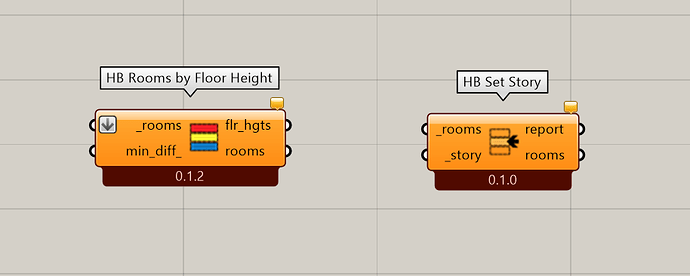Hey @AbrahamYezioro,
I didn’t mean to imply that you shouldn’t build large multi-floor buildings with Honeybee. It’s true that Dragonfly lets you work at a higher level of abstraction from Honeybee so that it’s easier to build large models if they abide by certain rules (like all rooms being extruded floor plates). But Honeybee can still do all that Dragonfly does and more so, though it might take a few more components. If its the ability to organize Honeybee models into stories that you are wondering about, there are Honeybee components that separate rooms by floor height and assign story IDs to the rooms, which effectively provide the same functionality as Dragonfly stories:
And, to answer your question about the AFN, the question of the “better” model usually comes down to whichever one you put the most effort into setting up correctly. The AFN can certainly model many more cases of air flow than the simple ventilation objects can model but, if you don’t spend the time to set up the interior openings correctly, then the AFN isn’t likely to be any more accurate than the simple openings. With this said, I have found the AFN to typically have lower overall air flows compared to equivalent models with simple ventilation objects and I think this is to be expected when moving from the simple ventilation’s “all or nothing” assumption about cross ventilation to the AFN’s more sophisticated way of modeling wind-driven flow.
